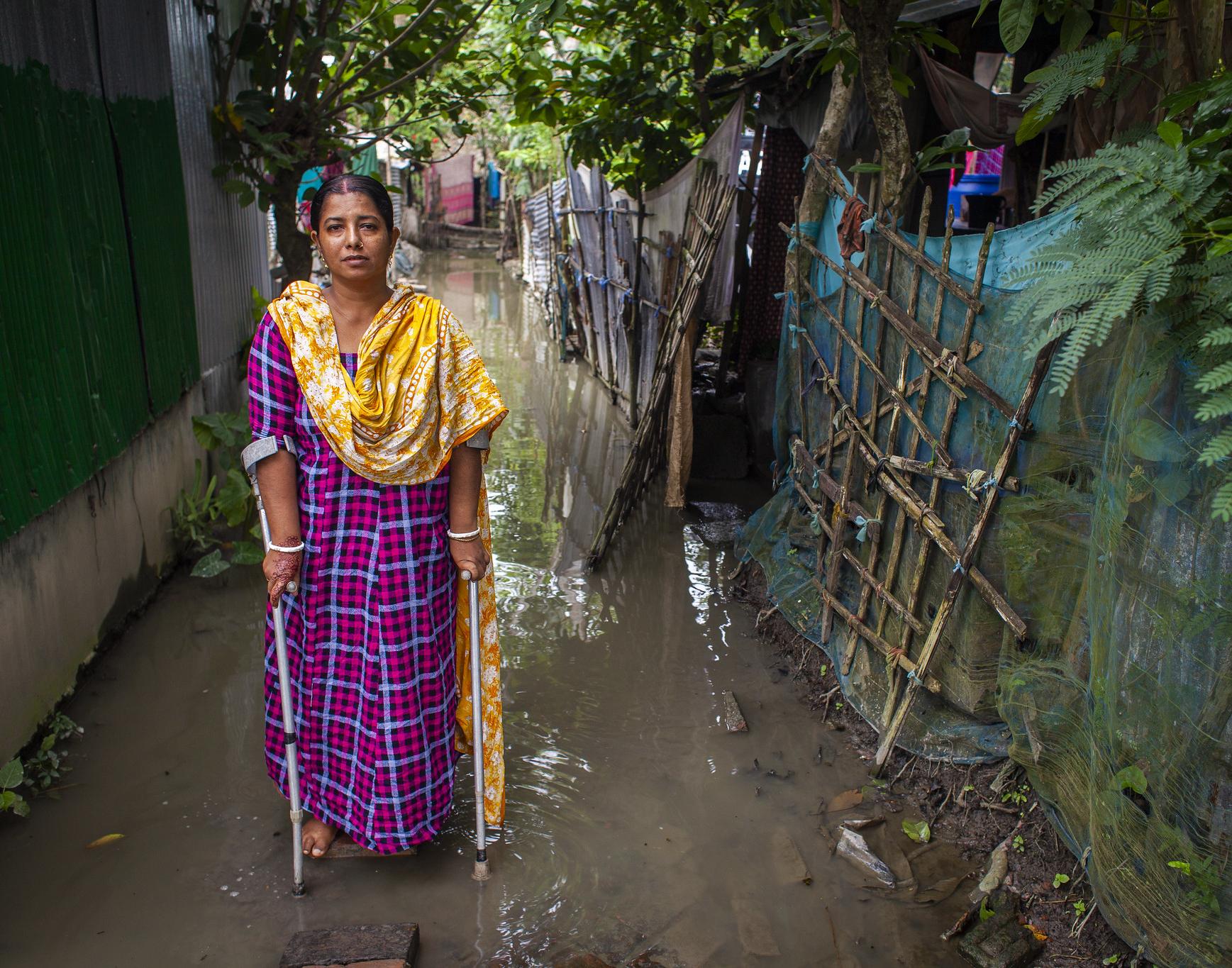
Globally, an estimated 19% of women live with a disability1 compared to 12% of men, due in part to gender bias in the allocation of scarce resources and access to services. Before the pandemic, women with disabilities were three times more likely to have unmet health care needs, three times more likely to be illiterate and two times less likely to be employed, compared to men without disabilities. They were also at least twice as likely as other women to experience violence, including by family, intimate partners and caregivers.
UN Women in collaboration with national statistical offices, governments and international partners rolled out 78 Rapid Gender Assessment surveys (RGAs) to measure the pandemic’s socioeconomic impacts and impact on violence against women (VAW), with disability data available for 26 of these. The findings reveal six ways the pandemic has amplified existing challenges for women with disabilities.
1. Restricted labour market participation
RGA results show that working-aged women aged 25–59 with disabilities were more likely to report lost earnings than working-aged women without disabilities (79 versus 68%, respectively) and to lose their jobs (33 versus 31%, respectively). Moreover, 74% of women with disabilities reported losing earnings, compared to 61% men with disabilities.
2. Reduced access to basic goods and services
The RGAs reveal that 17% of women with disabilities had increased difficulty accessing sanitary and health products during the pandemic, compared to 14% of women without disabilities. Meanwhile, 25% of women with disabilities reported difficulty accessing medical care, versus 18% of women without. Given that persons with disabilities generally have more health care needs than others, restricted access can have major repercussions, especially for those needing sexual and reproductive health care.
Difficulty accessing products and services, by women with and without disabilities

Women with disabilities were also especially likely to report difficulty accessing water compared to women without (35 versus 23%, respectively), as well as food (59 versus 47%, respectively). Already limited access to transportation was exacerbated by pandemic-related restrictions that further limited access, particularly for women with disabilities (40%, compared to 29% of women without).
3. Increased unpaid care and domestic work
While people with disabilities are often depicted as the receivers of care, RGA data reveal that 54% of surveyed women with disabilities increased their provision of care and domestic work during the pandemic – compared to 49% of women without disabilities, and to 44% of men without disabilities or 47% of men with disabilities. Additionally, 56% of women with disabilities reported increased childcare, more than women without disabilities (47%), men with disabilities (50%) and men without (45%).
Older women (aged 60+) with disabilities were also more likely than those without to report increased domestic work (47 versus 45%, respectively) and childcare (62 versus 33%, respectively).
4. Compromised feelings of safety
Data from the RGAs on VAW reveal that 36% of women with disabilities think violence in their community increased during the pandemic, compared to 30% of women without.
Percentage of women who think that VAW increased in their community during COVID-19, by differently abled group

Moreover, women with disabilities were those most likely to report not feeling safe at home during the pandemic (43%, compared to 37% of women without disabilities). Feeling unsafe and perceptions of increased violence can be especially problematic for women with disabilities, who may find it harder to report violence and abuse or access support, and have to depend on caregivers.
5. Strained mental and emotional health
Worsened socioeconomic conditions, access to basic goods and services and feelings of safety for women with disabilities have taken a toll, with 53% of women of all ages reporting increased mental and emotional stress in the RGAs – far more than women without disabilities (43%). Single women with disabilities and with children in the household were especially likely to report increased emotional and mental stress (63%, versus 58% of women without disabilities).
6. Insufficient relief coverage
Despite the severe socioeconomic impacts of the pandemic on women with disabilities, only 11% reported receiving cash relief and 14% reported receiving in-kind relief. Women with disabilities with children in the household were also less likely than their counterparts without disabilities to receive cash relief from the government (12 versus 17%, respectively) or in-kind relief (13 versus 14%, respectively).
Leave no one behind
Women and girls experiencing multiple and intersecting forms of discrimination are often the furthest behind. As such, gender statistics should not be limited to differences between women and men, but examine differentiated circumstances among groups of women to ensure that none are left behind.
While national disability statistics are increasingly available, particularly through censuses, greater investment is needed in the production and disaggregation of data by multiple dimensions to understand the intersecting forms of discrimination that exclude women with disabilities from various aspects of life. UN Women’s Counted and Visible Toolkit compiles tools used by several countries to generate sex-disaggregated statistics to catalyse action to leave no one behind. Timely and quality gender data play a key role in informing government policies and in ensuring that the needs of women with disabilities are holistically covered in policymaking and in COVID-19 responses.
[1] Disability is defined by the Convention on the Rights of Persons with Disabilities as the interaction between persons with impairments and attitudinal and environmental barriers that hinder their full and effective participation in society in an equal manner.



